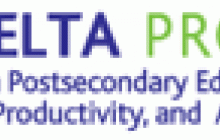College Finance Report: Most Have Weathered the Recession
The 2008-09 recession struck hard at college and university finances. Turbulence in state budgets and financial markets, combined with huge enrollment increases, strained revenues for both public and private colleges. And that created difficult spending choices for many postsecondary institutions.
By 2011, declines in state funding per student had slowed at public colleges and universities. Average revenues per student—which draw from such sources as tuition, state and local appropriations, and income from endowments and investment—largely held steady or increased. And spending declines had stabilized.
A report released today by the Delta Cost Project at AIR continues to track the rebound. According to Trends in College Spending: 2003-2013, colleges and universities continued to show signs of fiscal recovery in 2013, but underneath these encouraging trends, some worrying shifts remain, particularly for public higher education.
Financially, 2013 was a positive year for most colleges and universities. Public research and private research and master’s institutions experienced the strongest resurgence in both revenues and spending. Between 2008 and 2013, average revenues per full-time-equivalent (FTE) student grew at all levels:
- up more than 6 percent at private master’s institutions
- up nearly 5 percent at private research universities
- up almost 2 percent at public research universities
In the same period, educational spending per student returned to near-peak pre-recession levels, with spending rising by nearly 7 percent at private master’s institutions (to $18,800) and by about 2 to 3 percent at public ($17,300) and private research ($37,800) institutions.
Community colleges, hardest hit financially by the recession, also saw their financial positions improve significantly in 2013. But they were still far below their pre-recession levels—and for less-than-reassuring reasons. Sharp declines in enrollment (down 4 percent from 2012 to 2013), rather than dramatic increases in funding support (up 3 percent from 2012 to 2013), drove average total revenues per FTE student up for the first time since 2008 (3 percent from 2012 to 2013). Revenues per student were still 9 percent lower than at the recession’s start in 2008. Educational spending per FTE student also rose substantially—growing by 5 percent (to $10,800) and rising for the second consecutive year since the 2008 recession.
Promising signs of fiscal recovery in higher education in 2013 do come with two significant and disheartening caveats, particularly for public colleges and universities:
- Funding per student remains well below pre-recession levels—on average, 20 to 30 percent lower than in 2008—in all types of public institutions, reflecting half a decade of state disinvestment in higher education that is unlikely to be restored soon.
- Driven at least partly by the erosion in public support, students in public institutions pay a higher share of their educational costs. Since 2008, the share of educational spending at these schools supported by student tuition has risen 10 percentage points, which has led to net tuition increases averaging $2,200 at public research universities; $1,300 at public master’s schools; $1,100 at public bachelor’s schools; and $650 at community colleges.
Although encouraging to see that the tuition share of educational costs at public four-year colleges and universities didn’t rise in 2013, student tuitions still paid for most educational spending at public four-year institutions: 62 percent at public research universities, 57 percent at public master’s institutions, and about 50 percent at public bachelor’s schools. And, at community colleges, while student tuitions financed a slightly smaller share of education costs compared to the year before, declining from 39 to 38 percent, the share was still up from 30 percent in 2008.
Recent work by the State Higher Education Executive Officers Association suggests that the recovery may have continued into 2014, as revenues per student rose again in 2014 with contributions from both net tuition revenue and state and local appropriations. With these revenue improvements, spending also likely increased, but the Delta Cost Project has yet to study whether the 2014 investments benefitted students, increased the number of degrees (and certificates) awarded, and improved institutional efficiency.
What will happen in the next economic downturn? Colleges and universities that don’t permanently restructure their costs before then may once again shift more of the burden onto students.
Steven Hurlburt is a senior researcher and director of the Delta Cost Project at AIR. The Delta Cost Project is a nationally recognized source of national data on college costs: revenue, income, and spending.

